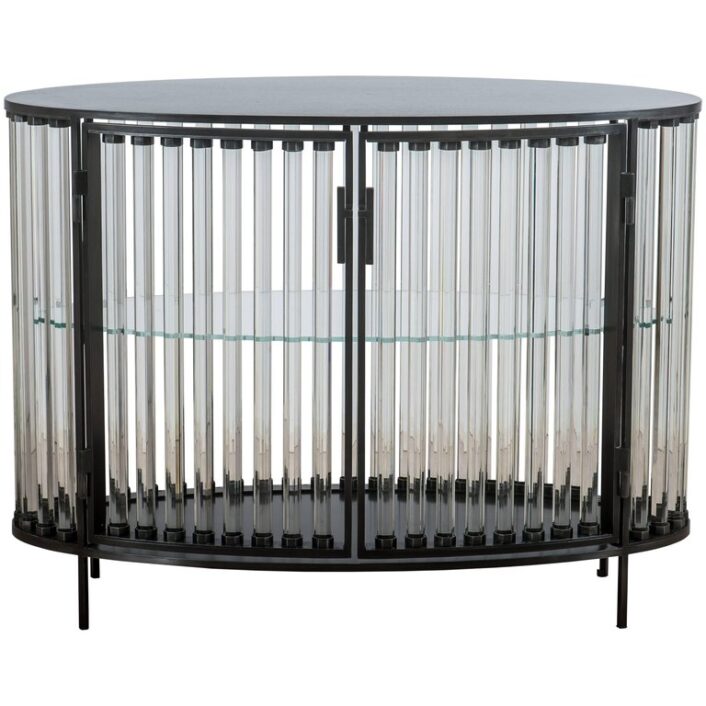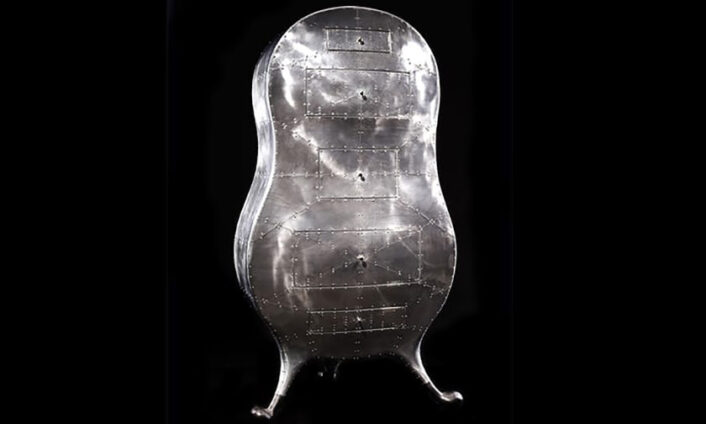Design
Douglas Fanning
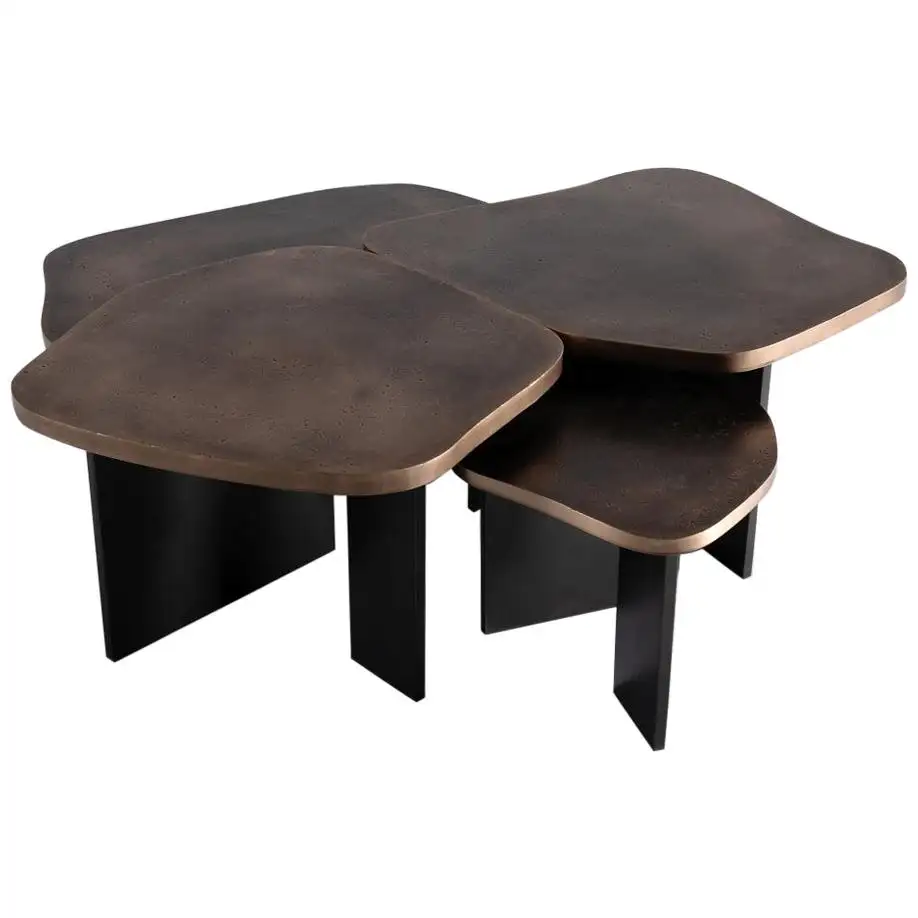
Set of Four Nesting Tables, 2019. The amorphous tables have bronze tops and rest on blackened steel legs.
Image courtesy of: 1st Dibs
Douglas Fanning is, among other things, an architect and designer who draws upon his formal training to create timeless interiors and furnishings. With a master’s degree in architecture from Columbia University and a past of teaching at top institutes such as the Rhode Island School of Design, The University of Pennsylvania, and The University of the Arts and Parsons School of Design, Fanning has grown his vision further than he ever imagined.
Fanning founded DYAD, his unique fabrication studio, to fulfill his architectural dream: “a mixture of design and artist collaboration wtih architecture at its center.” His philosophy remains the same whether working on interiors or furnishings: to share a grounded respect for four elements- proportion and scale, structure and detail.
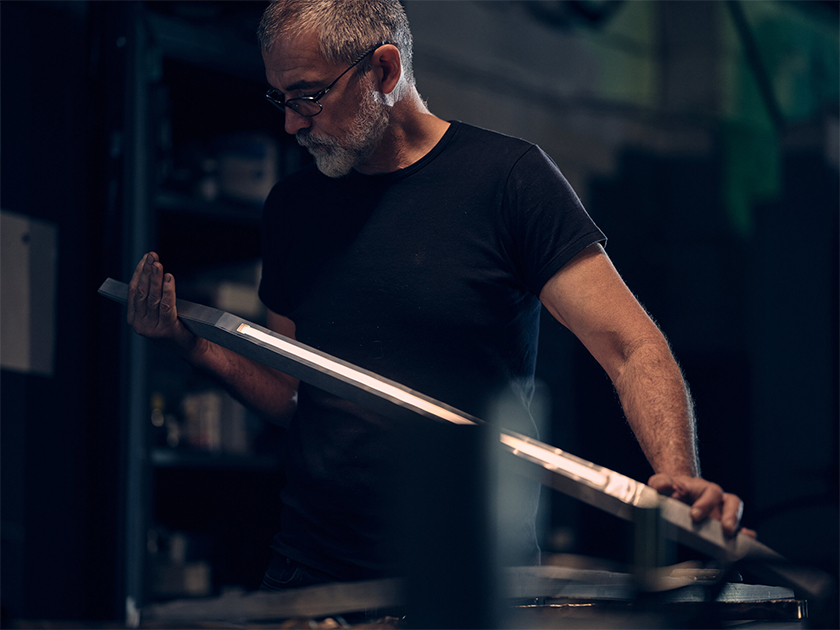
Fanning at work.
Image courtesy of: Douglas Fanning
DYAD was founded in 1994, and for the past decade, Fanning has continued to push the envelope with innovate designs in architecture, lighting, and furniture. His studio has become knowns for its minimal modern aesthetic and craftsmanship. A “Who’s Who” list of private clients as well as a long list of companies, among which are Diesel Jeans, Theory, and Saks Fifth Avenue, have enlisted Fanning to make their vision a reality.
Different from other studios is that the founder is experienced as both an architect AND a manufacturer. As a self-taught welder, Fanning is a wizard at shaping metal. Luckily, his location in the Red Hood neighborhood of Brooklyn serves three purposes. The office is located in a small garage; and his architecture studio is located above his metal shop. He hopes his studio is (courtesy of: Design Lush), “both a place for inventing and a shop for manufacturing.”
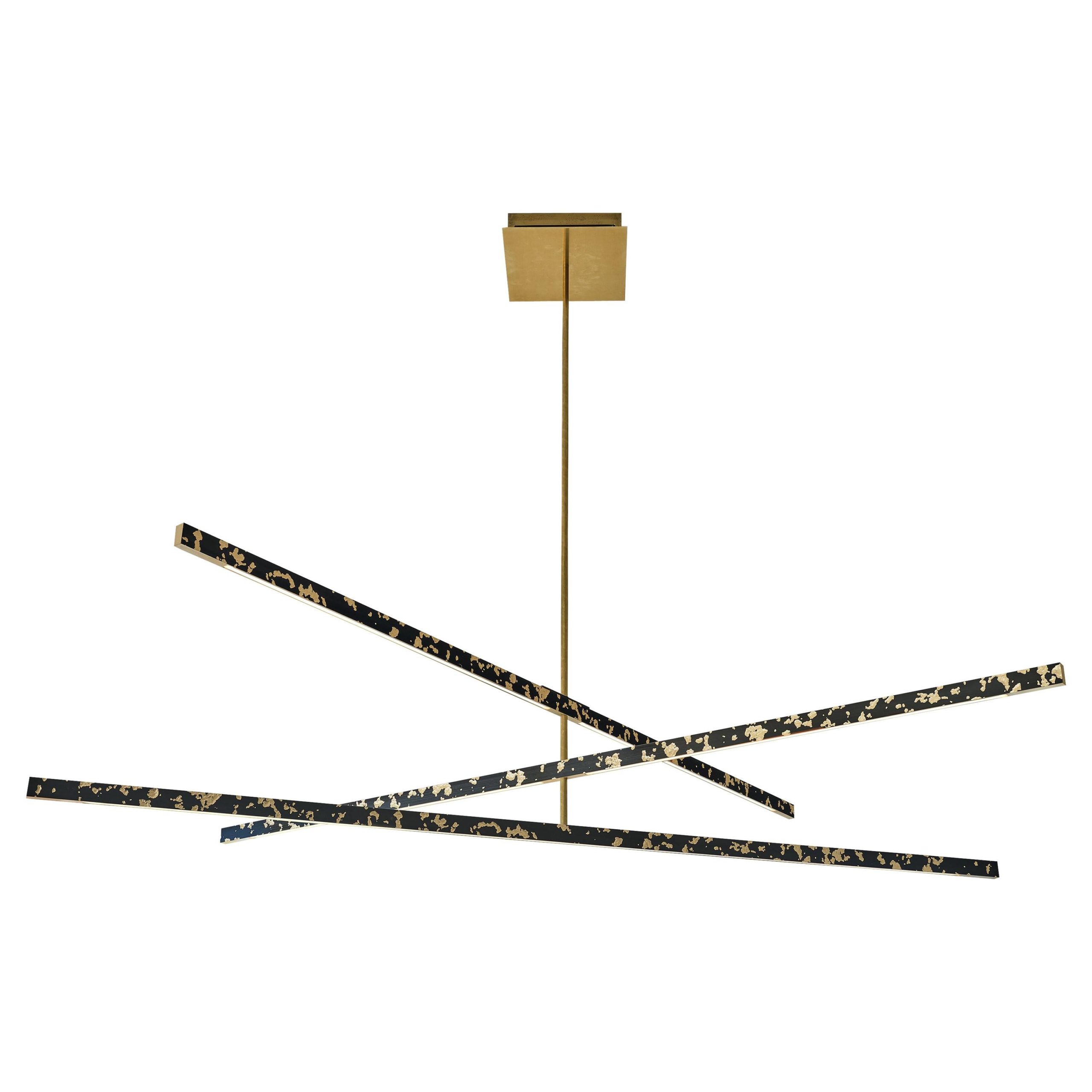
Till 3 Tier, Contemporary Brass Ceiling Light, 2021. Solid brass bars in a dark oil rubbed bronze with a polished pattern, polished edges, and a natural or brushed brass canopy and stem.
Image courtesy of: 1st Dibs
Fanning’s workspace is full of raw materials, steel-shaping machines, and prototypes in various stages of progress. Clients’ projects are also spread throughout the space… waiting for their chance to turn into reality. Upon close inspection, it is clear that the metal bars and sheets are all made up of different metals; clearly, creativity abounds.
Along with his fabrication studio, DAYA, Fanning’s creations investigate what comes out from “what you know” and “what you envision.” Along with his dynamic imagination, the designer looks to art, design and architectural avenues to find new possibilities of pushing the “boundaries between form and physics to create clean, fluid, yet uncompromisingly daring pieces.”
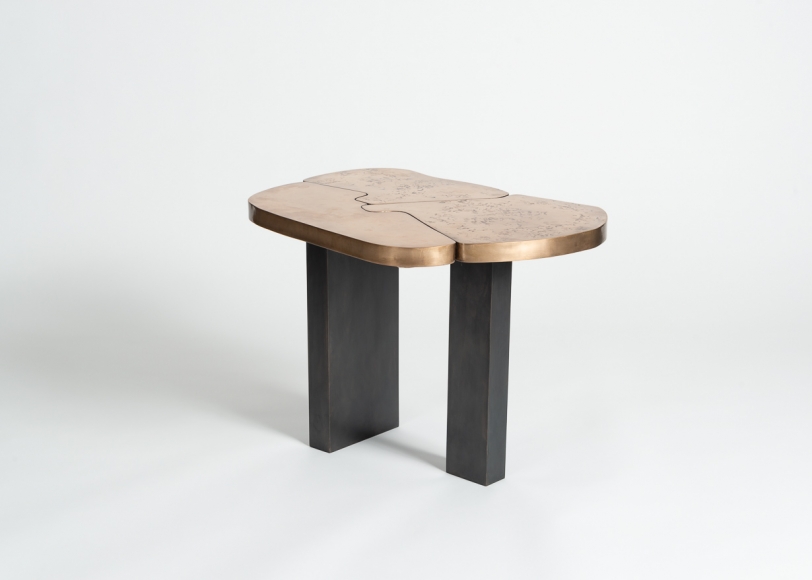
Contemporary Abstract Side Table, 2018.
Image courtesy of: Maison Gerard
Fanning is full of ideas, his imagination is seemingly running on overtime! Evident by the materials and techniques that he uses… the designer challenges himself to test his outer limits. As Benoist Drut, Maison Gerard’s owner, said (courtesy of the designer’s website), “Maybe because Douglas was trained as an architect, I have rarely seen such a thirst for perfection, attention to details and subtlety. He has acquired a mastery of all metals pushing the boundaries of physics to achieve what may appear effortless and simple at first, but indeed is the result of years of refinement and a love for craft and process.”
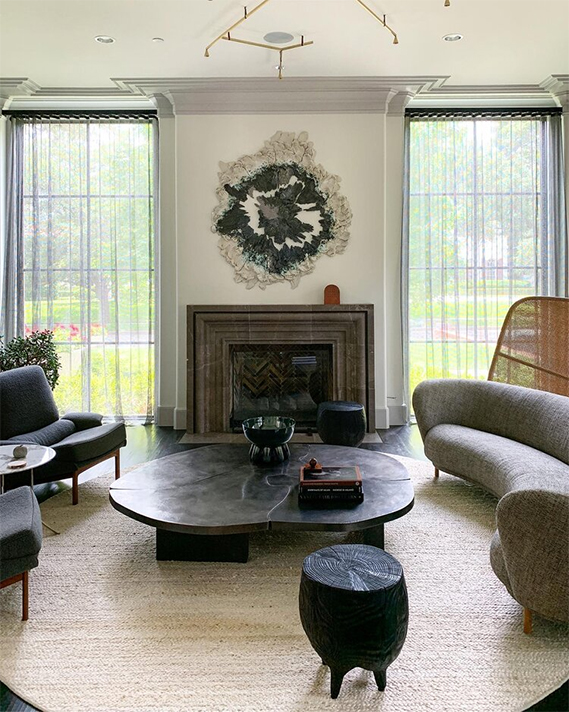
Rubble Table, 2018 (Josh Rice Design).
Image courtesy of: Douglas Fanning
Whether working with glass, metal, or stone… Fanning aspires to account for balance, beauty, and proportion with each and every piece. It is clear that for Fanning, everything starts and ends with architecture. Courtesy of Maison Gerard’s website, the designer described himself and his work, “In a way, it’s fascinating to apply the same principles I use in spatial function and aesthetic, like linearity and minimalism, to smaller pieces. Whereas architecture promotes enjoyment through immersion in a space itself, creating objects in physical form projects that enjoyment or intended comfort within a pre-existing environment. It’s a play between space itself and objects within a space.”
